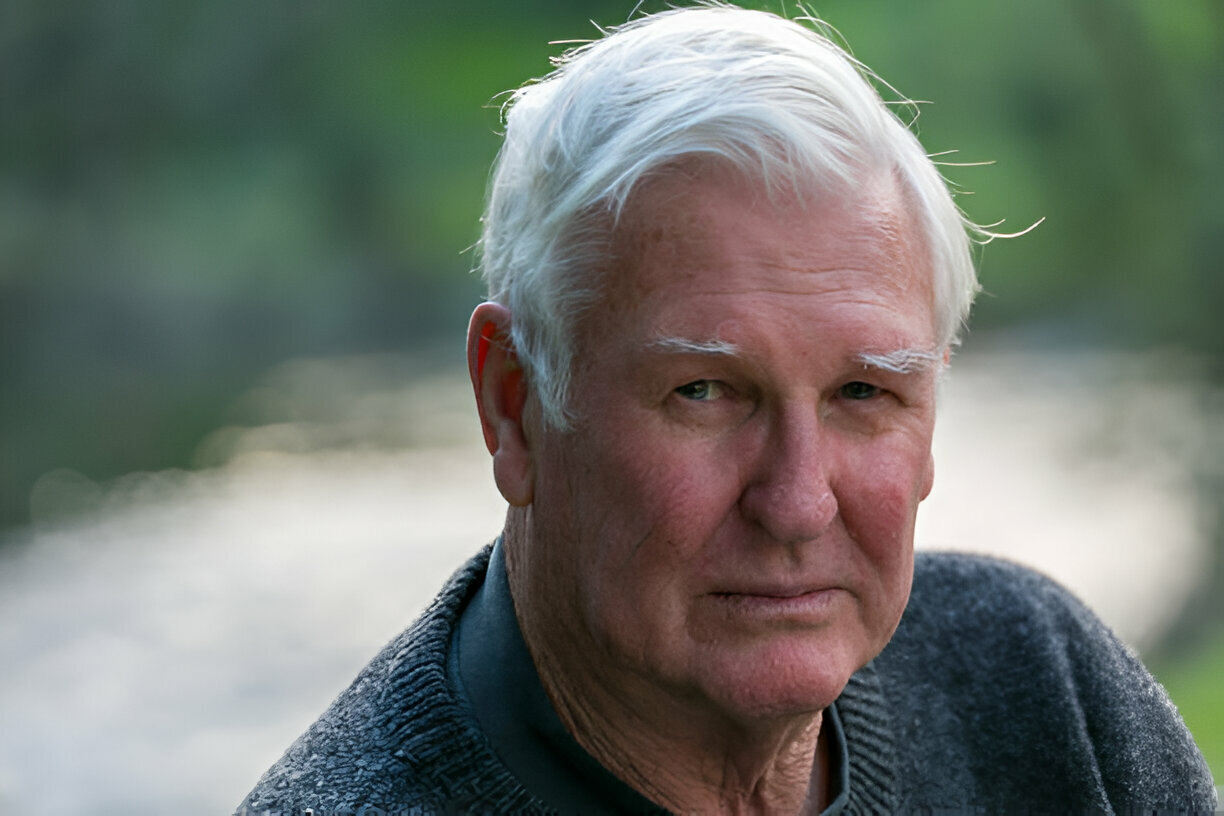In today’s classrooms, learning is more than just reading from books. Teachers now know that talking, sharing ideas, and asking questions matter a lot. That’s why many still follow Douglas Barnes and his smart way of teaching.
But who was he? Why are his teaching methods still so important? This blog will help you understand his ideas in easy, human words, and how they still help teachers and students today.
Table of Contents
Who Was Douglas Barnes?
Douglas Barnes was a teacher, writer, and researcher from the UK who changed how we think about learning. In the 1970s, while working with schools and teachers, he began to notice something simple but powerful: students learn best when they talk about what they’re learning.
He didn’t just guess this — he studied real classrooms and recorded real conversations. He watched how students asked questions, made mistakes, explained their thinking, and built ideas together. What he found was clear: when students talk, they think more deeply — and they learn more.
Barnes shared his big ideas in a book called “From Communication to Curriculum.” In it, he explained how classroom talk isn’t just extra — it’s a key part of learning. He showed that teachers don’t need to do all the talking. Instead, students should be active partners in every lesson.
He also introduced two important types of classroom talk:
- Presentational Talk – when students try to give the “right” answer, usually to please the teacher.
- Exploratory Talk – when students share rough ideas, wonder aloud, and build thoughts together.
Barnes believed exploratory talk was the secret to real understanding. It’s okay to be unsure, to make mistakes, and to think out loud — that’s how learning grows.
Even today, his research is used in teacher training, classroom planning, and education around the world. Teachers, parents, and students still benefit from his powerful message:
“Learning floats on a sea of talk.”
Barnes helped us see that conversation is not just helpful — it’s essential to learning. His work reminds us that every student deserves a voice, a chance to ask questions, and time to think out loud.
Learn more about Douglas Barnes and his educational impact from this scholarly article at Taylor & Francis Online.
What Did Douglas Barnes Say About Learning Through Talk?
Douglas Barnes believed this:
“Learning floats on a sea of talk.”
This means that talking in class is not just chatting. It’s how students learn. When children explain their thinking, ask “why,” and listen to others, they grow smarter.
He explained that there are two kinds of talk in classrooms:
| Students think out loud, ask questions, and give reasons. This builds learning. | Meaning |
|---|---|
| Exploratory Talk | Students think out loud, ask questions, give reasons. This builds learning. |
| Presentational Talk | Students share final answers or reports — not as helpful for deep thinking. |
Douglas Barnes said exploratory talk is more powerful for real learning.
How do His Teaching Ideas Work in the Real World?
Let’s take a simple example. In a class about climate change:
- A teacher asks: “Why do you think the weather is changing?”
- Students talk, share guesses, argue politely, and build new ideas.
- This talking helps them make sense of big ideas together.
That’s Douglas Barnes’ method in action — not just facts, but real understanding.
Why Teachers Still Follow Douglas Barnes Today?
Here’s why many teachers around the world still follow him:
| Reason | Explanation |
|---|---|
| Helps deeper learning | Students build meaning, not just memorize. |
| Improves thinking skills | Kids ask questions, compare answers, and think critically. |
| Builds communication | Students learn to explain clearly and listen to others. |
| Supports group work | Talking helps in teamwork and understanding different views. |
| Connects better with real life | Learning becomes active, not passive. |
His work is now used in many teaching programs and training systems around the world.
How Douglas Barnes Helps Students Learn Better?
Douglas Barnes said learning is not one-way. It’s a two-way street. Students must talk, ask, and explore to truly learn.
Let’s look at this with a simple table:
| Without Barnes’ Ideas | With Barnes’ Ideas |
|---|---|
| Teacher talks, students listen | Students and teacher both share ideas |
| Quiet classrooms | Active, talking classrooms |
| Focus on right answers | Focus on understanding and thinking |
| No room for mistakes | Mistakes seen as learning steps |
You can see how his ideas make classrooms more student-friendly.
Douglas Barnes vs. Traditional Teaching
Let’s compare the old ways of teaching with Barnes’ way:
| Traditional Teaching | Douglas Barnes’ Teaching |
|---|---|
| One correct answer | Many views allowed |
| No questions from students | Students ask questions freely |
| Memorize for tests | Understand ideas through talking |
| Teacher always leads | Students explore and lead sometimes |
Barnes helped teachers move away from silence to smart speaking.
Examples of Douglas Barnes’ Teaching Ideas in Schools
Here are some examples of how teachers use Douglas Barnes in real classrooms:
In a Science Class:
Students work in groups and talk about how plants grow. Each child shares what they think, and others build on it. The teacher listens and guides.
In a Reading Class:
After reading a story, kids discuss what the characters felt and why. This talk helps them feel and think more deeply.
In a Math Class:
Instead of just solving problems, students explain how they solved it — even if the answer is wrong.
How Teachers Can Use His Ideas in Class
Douglas Barnes believed that talk helps students think better. His methods are simple but powerful — and easy to use in real classrooms. Whether you’re teaching young kids or older students, these ideas can help make learning deeper, more fun, and more meaningful.
Here’s how you can bring his methods to life:
Simple Tips:
- Ask open-ended questions: Try saying, “Why do you think that happened?” instead of just “What’s the answer?” This gets students thinking and talking more.
- Let students talk in pairs or small groups: Talking with a friend can help shy students feel braver and build their ideas together.
- Give time for thinking: Don’t rush answers. Silence is okay! It gives students time to plan their thoughts.
- Make it okay to be wrong: Remind students that mistakes are part of learning. This builds confidence.
- Join in the talk — not just lead it: Be a partner in the discussion, not just the boss. Ask questions, wonder out loud, and explore ideas with your class.
Bonus Tools:
- Use thinking maps or talk frames: These are charts or sentence starters like “I believe… because…” to help students organize their thoughts.
- Practice “Think, Pair, Share” strategies: First, let students think quietly. Then pair them up to talk. Finally, share ideas as a class.
- Give real-world problems to discuss: Ask questions that connect to students’ lives. Example: “How would you solve traffic in our city?” This makes learning real and exciting.
These simple strategies turn your classroom into a thinking space — not just a testing zone. They help students grow confidence, ask better questions, and learn together. Just like Douglas Barnes hoped.

Problems Teachers Face Without These Methods
When teachers don’t use Douglas Barnes’ ideas, many problems show up:
| Problem | What Happens |
|---|---|
| Students get bored | No talking = no engagement |
| Shy kids stay quiet | They don’t get to share ideas |
| Only smart kids speak | Others miss the chance to grow |
| Less critical thinking | Just copying answers, not understanding them |
Barnes’ way solves these problems — and creates equal learning chances.
Final Thoughts
Even after so many years, Douglas Barnes still helps teachers, students, and classrooms all around the world. His powerful idea — “learning floats on a sea of talk” — reminds us that conversation isn’t just extra, it’s essential.
When students ask questions, share ideas, and explain their thoughts, they don’t just memorize — they understand. That’s why his methods are still used in schools, teacher training, and educational research today.
So whether you’re:
- A new teacher is learning the best ways to teach,
- A parent helping your child study at home,
- Or just someone who enjoys learning new things…
👉 Remember this: Talking isn’t wasting time — it’s how we learn best.
Encourage open discussion. Let kids speak their minds. Allow mistakes, questions, and stories. That’s how minds grow. That’s how confidence builds. That’s how real learning happens.
To learn more about classroom talk and effective teaching strategies, visit this helpful guide from Cambridge University Press:
🔗 Exploratory Talk and Dialogic Teaching Douglas Barnes showed us that when we give students a voice, we give them a chance to think, explore, and shine.
FAQs
Who was Douglas Barnes?
He was a British educator who said students learn better when they talk and think out loud in class.
What’s exploratory talk?
It’s when students explore ideas, ask questions, and think together — not just give the right answers.
How can I use his ideas if I teach young kids?
Use group activities, let kids talk in pairs, and ask open-ended questions.
Is this method good for shy students?
Yes! It helps shy kids speak in small groups and slowly build confidence.
Where can I learn more about Douglas Barnes?
Try reading From Communication to Curriculum or visit education research websites like JSTOR or Cambridge University Press.
About FiveStarCoder
At FiveStarCoder, we believe learning should be powerful, practical, and personal. That’s why we offer smart, easy-to-use solutions for students, educators, businesses, and lifelong learners. Our mission is simple: help people grow through better content, better code, and better tools.
We specialize in:
- ✍️ Content Writing: From blog articles to SEO content, we craft words that teach and inspire.
- 💻 Coding Support: Need help with programming? We offer beginner-friendly to expert-level coding help.
- 🛠️ Online Tools & Resources: Explore a wide range of learning tools, worksheets, and templates designed to simplify complex topics.
- 🎓 Professional Development: Whether you’re an educator or a corporate team, we provide training support that boosts skill and confidence.
At Five Star Coder, we blend creativity with clarity and technology with teaching. We’re not just here to deliver services — we’re here to build futures.
Whether you run a school, manage a company, or learn from home, we’re here to support your journey with:
- Clear communication
- Practical solutions
- Friendly expert guidance
Let’s build a smarter, simpler future together — one step, one line, and one idea at a time.
